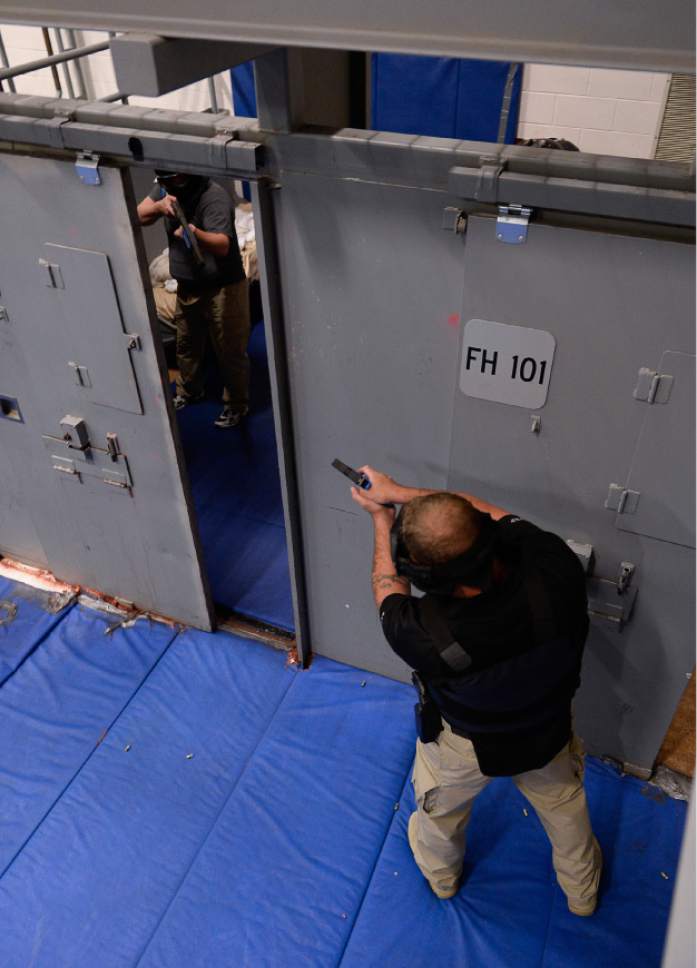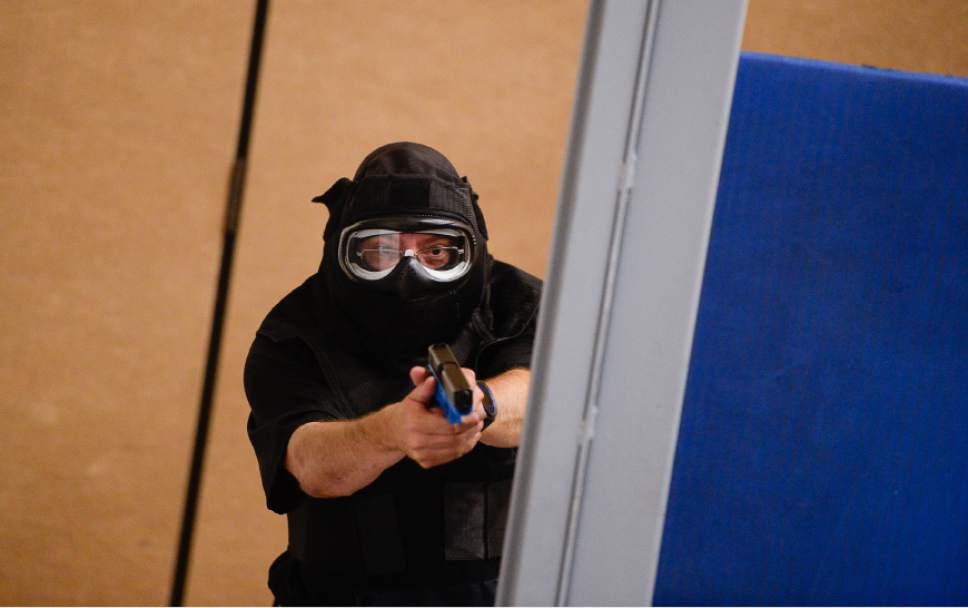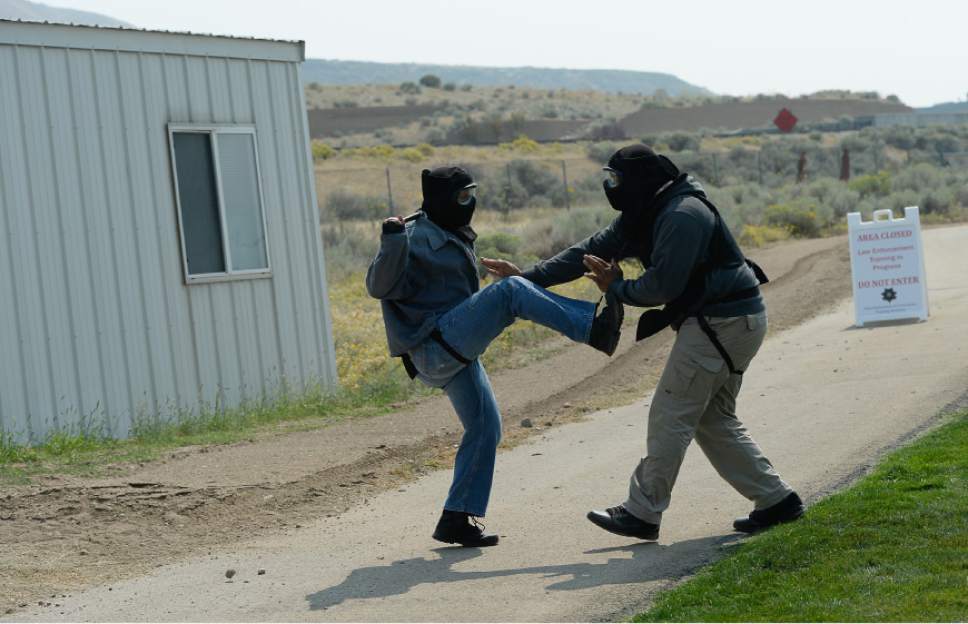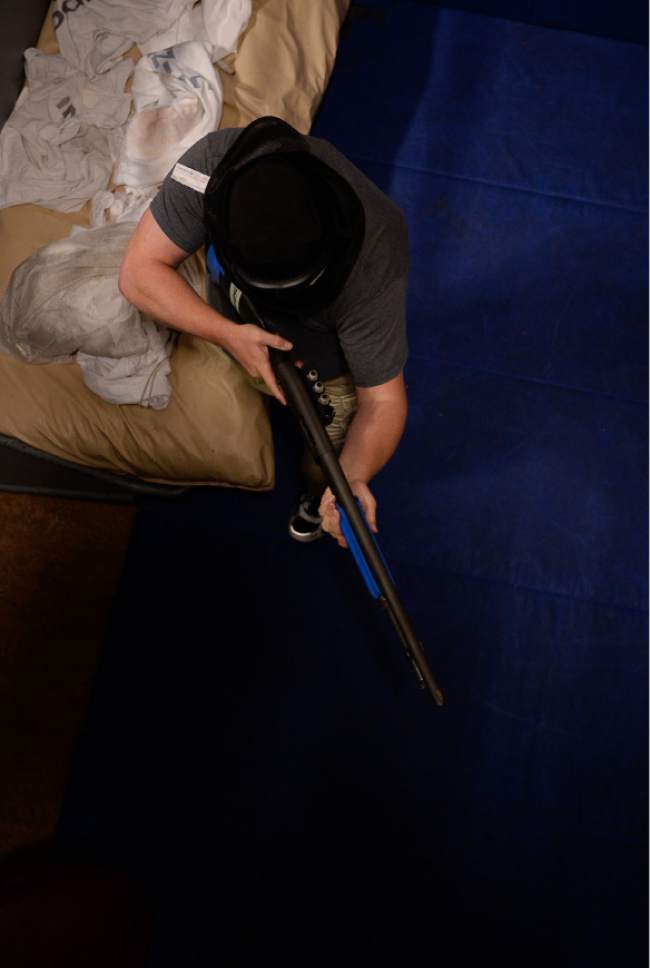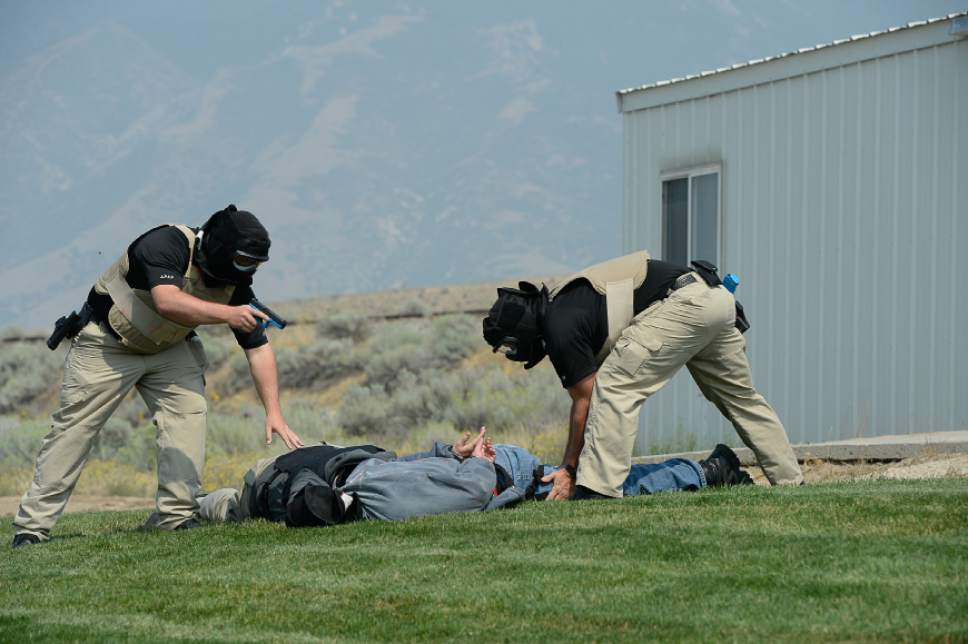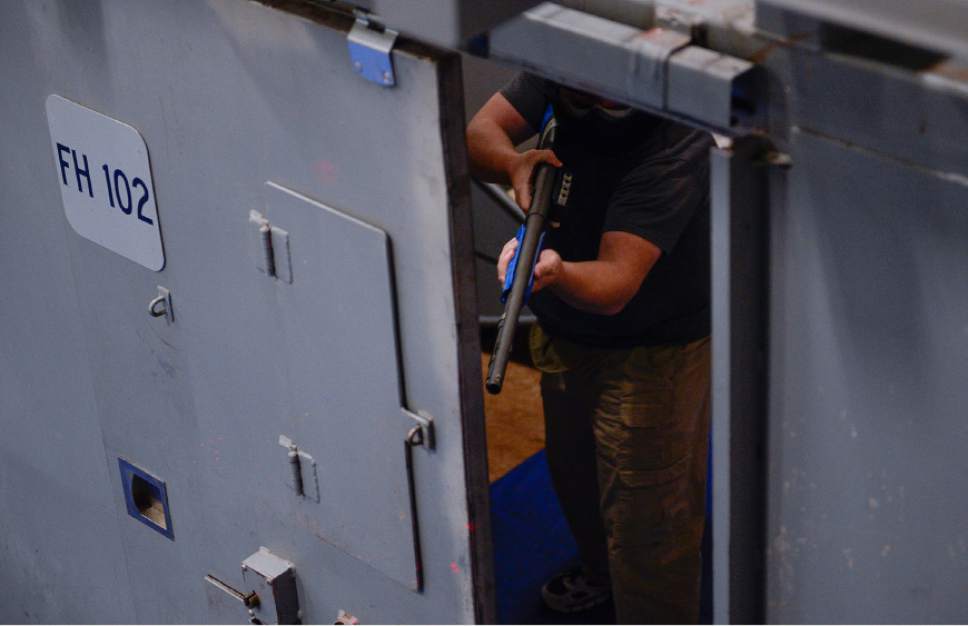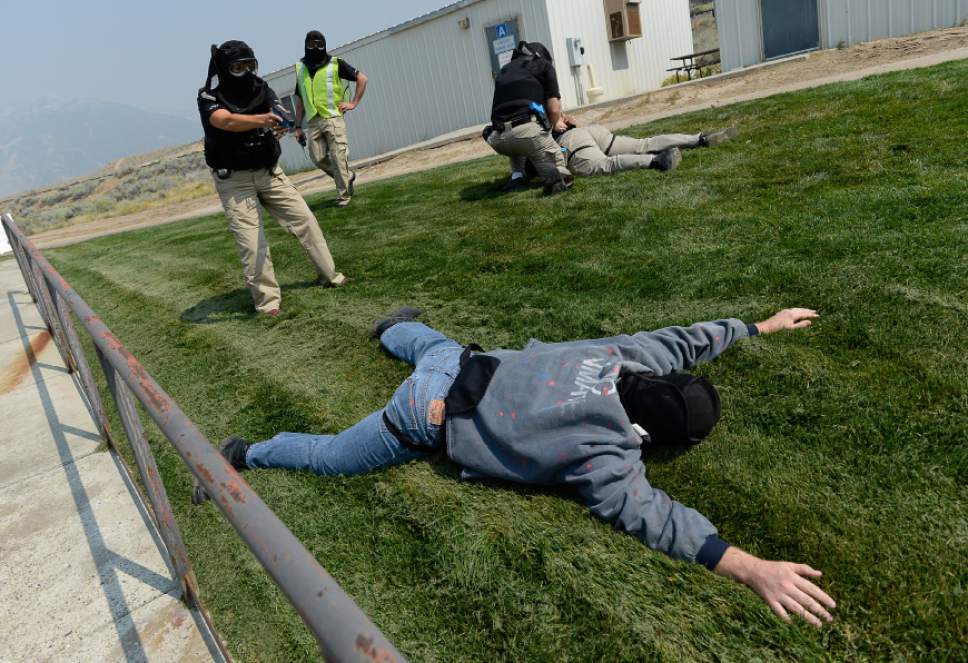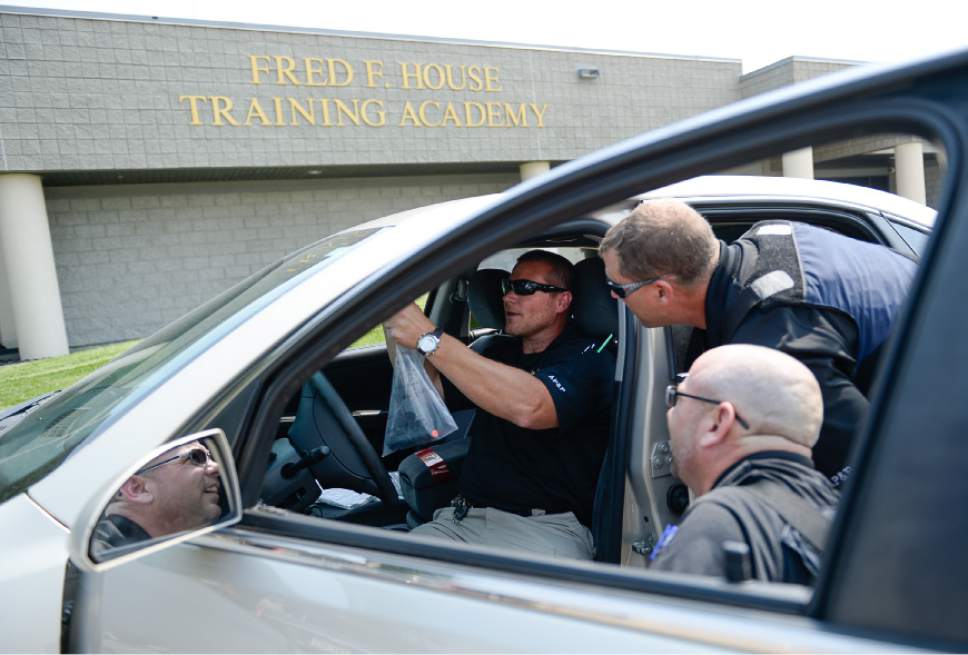This is an archived article that was published on sltrib.com in 2015, and information in the article may be outdated. It is provided only for personal research purposes and may not be reprinted.
The Utah Department of Corrections is not done with Draper and won't be even after the last inmate is transferred to a new prison in Salt Lake City a few years from now and developers take control of the old prison land.
That's because the Corrections headquarters housing the top brass, along with the training academy, are staying put. They sit on the east side of Interstate 15 adjacent to the barbed wire fences separating the prison from the outside world.
State lawmakers, Corrections leaders and outside consultants talked about relocating these functions to the new prison site, but abandoned the talks early on.
"It was not cost effective," said Rollin Cook, Corrections executive director, noting that those administrative buildings are in good shape. That's a stark contrast to the ones housing prisoners, which Cook has described as "disorganized" and "make-do," arguing that a major rebuild is a necessity.
Outside consultant Brad Sassatelli said he never formally estimated how much it would cost to move the support buildings and noted that in most states the administrators are not located next to lockups.
He said Corrections officials "believed they could adequately administer the department and its training functions remotely no matter where the facility was eventually located."
Earlier this month, the Legislature approved and Gov. Gary Herbert signed a legislative resolution to move the prison to Salt Lake City, an effort that is expected to take at least three years and cost $550 million.
Cook said he tries to visit the Draper prison at least three times a month and if it is farther away, it will make that more difficult.
"For any good leader, it is a challenge to stay in proper contact," he said, though he notes that he has parole officers who work throughout the state.
The state has 164 employees who work at the administration building or the Fred House Training Academy, where corrections and parole officers learn the trade. The Fred House building is also where the department holds monthly family orientation meetings for people who have incarcerated relatives.
Draper City officials are excited to develop the prison land on the west side of I-15 and would like to get their hands on the east-side Corrections properties as well.
"Once the new prison enters the design phase, corrections may change their mind about long-term locations of some of those buildings," said Jeff Hartley, a lobbyist working for Draper.
Cook said it's hard to predict what might happen 10 or 15 years down the road.
"There may be a time when it's the right thing to do."


